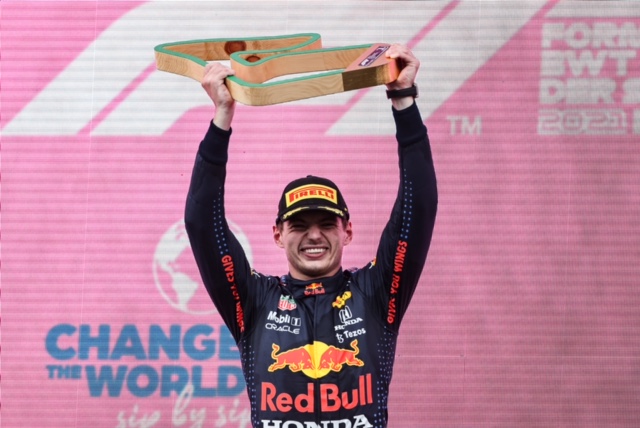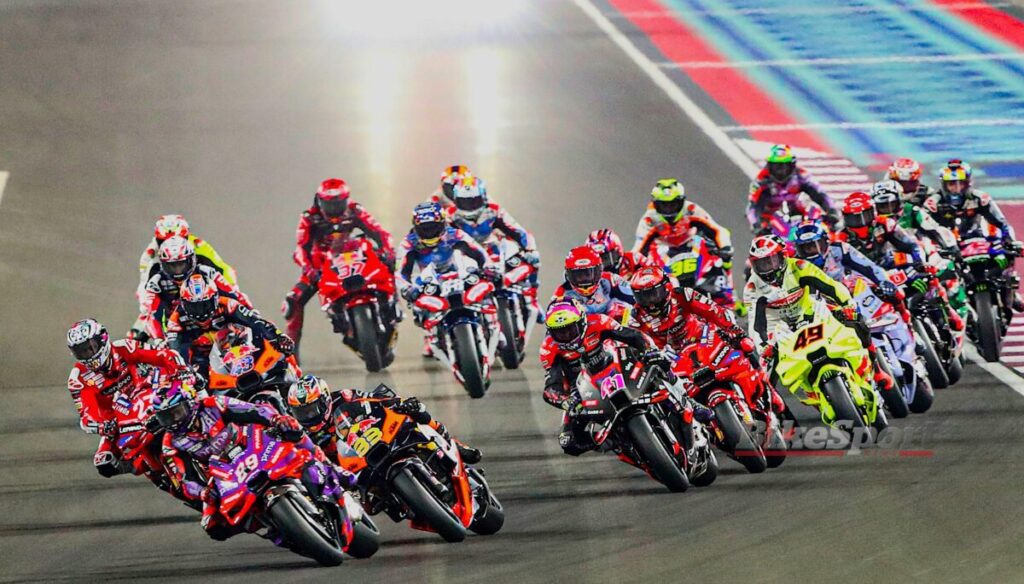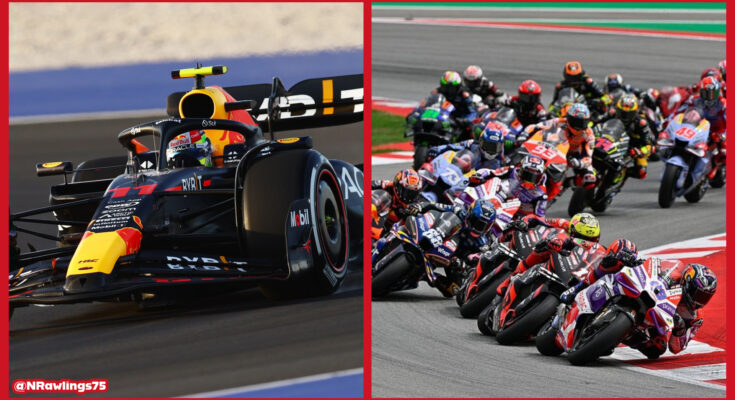AS both the Formula One and MotoGP seasons have recently kicked off, we compare the two championships at the pinnacle of motor sport to help you decide what to watch.
With Max Verstappen’s dominance in Formula One becoming more and more apparent, F1 fans of old are beginning to turn their backs on the sport they once loved, and new fans are struggling to maintain their interest as the Dutchman wins almost every race comfortably.
So, what’s the next best alternative? Well, look no further than the MotoGP championship. With fast paced races, high octane wheel-to-wheel racing and more speed, it appears to be the perfect replacement.
In order to compare the two, we should set some parameters, in order to make this a fair examination. These are:
- Race weekend format length
- In-race action
- Competitiveness
- Scheduling and season length
In terms of a race weekend in F1, you traditionally have Free Practice One and Two on a Friday, Free Practice Three and Qualifying on the Saturday and the Race on the Sunday.
The main ‘feature race’ usually lasts around between 80 and 100 minutes on average, with the drivers driving an enforced minimum of 305 kilometres (190 miles). This does has pros and cons.
A longer race means more chances for overtakes, crashes and general action, and with the six sprint races on top of that, it should lend itself to having more excitement.
However if a race becomes boring, which more and more people are proclaiming F1 is becoming, races can become two hours of just cars driving a track. And with Max Verstappen and Red Bull’s dominance over the last two seasons, it means the outcome is usually the same at the end of it.

MotoGP follows a similar format to that of an F1 sprint weekend. There is two free practice sessions on a Friday, then qualifying for both the sprint and main race, as well as the sprint race itself on the Saturday, followed by the main race on Sunday.
MotoGP races are far shorter than those in F1, with the sprint being roughly half of the feature race. The average MotoGP race has between 20 and 30 laps, meaning the sprint will be around 10 to 15 laps. The races are between 100 and 130 kilometres in length (60 -80 miles).
This has the opposite effect of it’s four-wheeled competitors, as the shorter races means the riders have to act quickly if they want to make their way towards the front. Additionally, riders have less time to create bigger gaps between themselves and their opponents, thus making each race that much tighter.
On top of that, if a race is boring, then fans aren’t sat there for two hours waiting for it to end.
However, shorter races also mean less time for overtakes and less racing in general.
So, if you fancy a longer race with more chances of action, then F1it is, if you prefer quicker, snappier races with closer racing, then it’s MotoGP for you.

Now, as for in-race action, in F1 that can vary. Sometimes, races can be extremely tight and be full of wheel-to-wheel racing.
However, this usually relies on either; a car that isn’t Verstappen’s qualifying in first, or a mid-race crash big enough to bring out the safety car to bunch up the field.
Additionally, the budgets of the F1 teams differ massively. Thus performance of the cars also differs massively. This means that it is usually the same seven or eight cars heading up the pack, and the same seven or eight cars bringing up the rear, reinforcing the opinion of F1 sceptics that it is boring.
In MotoGP, however, the field is a lot closer.
Whilst there are some advantages for teams, these usually come from the bike manufacturers rather than the amount of money a team has.
For example, this season, the teams using Ducatis look stronger than the teams using a Hondas, however, there are four teams using Ducati bikes.
Riders can make their way toward the front a lot easier. To give you an idea, in the opening race of the 2024 MotoGP season, TNT Sports commentator Neil Hodgson said Aprillia rider Aleix Espargaro could still make a charge for the race win, despite being in ninth place.
So, for more wheel-to-wheel racing, more equal machinery and competitiveness, MotoGP takes the cake.
Finally, we take a look at scheduling.
There are either two or three weeks, sometimes more, between each MotoGP race, whereas in F1 it’s between one to two weeks between each race. So fans of four wheel racing have a race to look forward to most weekends, whereas motorcycle fans have to wait that little bit longer for each race.


Some would say it builds the anticipation and tension for each race, but surely you’d prefer to watch your favourite sport every weekend?
So, in summary, both Formula One and MotoGP have their positives and negatives; F1 is longer and has a bigger gulf in quality, however allows for more strategic racing and more chance for action.
MotoGP is faster, shorter and more competitive, but for those reasons has less on track action and there is more time between each race weekend.
Both however, are undeniably the peak of motor sport and create magical moments that will be remembered forever.



